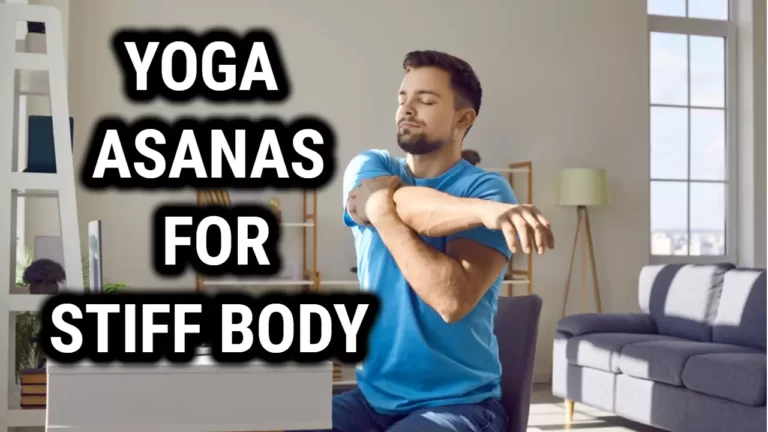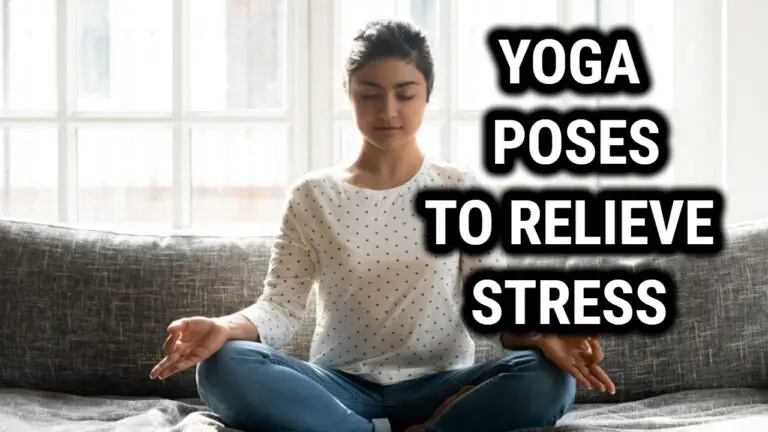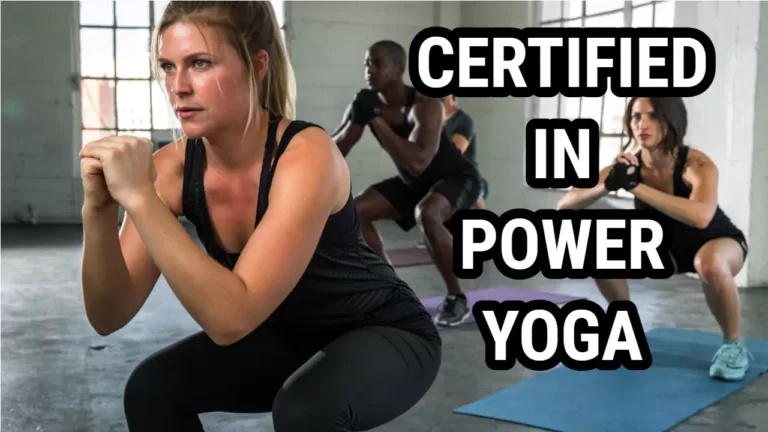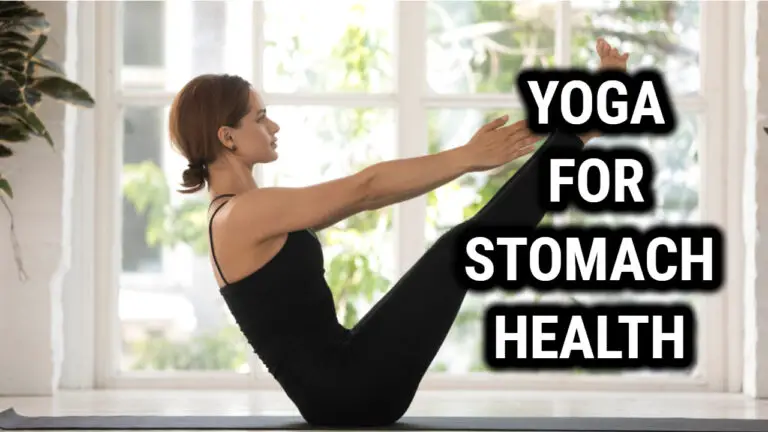Yoga for Neck Pain: Relieve Your Pain and Improve Your Quality of Life

Neck pain can be a debilitating condition that can interfere with your daily life. Whether it’s caused by poor posture, muscle strain, arthritis, or other conditions, neck pain can make it difficult to perform even simple tasks like turning your head or looking down at your phone.
Fortunately, yoga can help alleviate neck pain and improve your quality of life. Over here, we’ll explore the causes of neck pain, the benefits of yoga for neck pain, and specific yoga poses that can help relieve your pain.
Is Yoga Good For Neck Pain?
Yoga can be an effective way to reduce neck pain and improve overall neck health. By practicing specific poses that stretch and strengthen the neck muscles, you can increase flexibility and range of motion, reduce tension and stress, and promote relaxation and wellbeing.
Consistent practice, listening to your body, using props and modifications, and seeking professional guidance if needed can all help ensure a safe and effective yoga practice for reducing neck pain.
Understanding Neck Pain
Before we dive into the benefits of yoga for neck pain, it’s important to understand what causes neck pain and how it can affect your body. Neck pain can be caused by a variety of factors, including poor posture, muscle strains and sprains, arthritis, degenerative disc disease, and pinched nerves. Some common symptoms of neck pain include:
- Stiffness
- Soreness
- Sharp or shooting pain
- Limited range of motion
- Headaches
- Numbness or tingling in the arms or hands
It’s important to consult with a medical professional if you are experiencing severe or persistent neck pain, as it could be a sign of a more serious condition.
Yoga and Neck Pain
Yoga is a holistic practice that involves physical postures (asanas), breathing techniques (pranayama), and meditation. Yoga has been shown to help alleviate a wide range of physical and mental conditions, including neck pain. Here are a few ways that yoga can help with neck pain:
Improving Posture
Poor posture is a common cause of neck pain, as it can put extra strain on the neck muscles and vertebrae. Yoga can help improve your posture by strengthening the muscles that support your spine and helping you become more aware of your body alignment.
Strengthening Neck Muscles
Weak neck muscles can contribute to neck pain and stiffness. Yoga poses that target the neck and shoulders can help strengthen these muscles, improving your posture and reducing pain and stiffness.
Stretching Neck Muscles
Tight muscles can also contribute to neck pain. Yoga poses that stretch the neck and shoulders can help alleviate tension and improve range of motion.
Reducing Stress and Tension
Stress and tension can cause neck pain by increasing muscle tension and contributing to poor posture. Yoga can help reduce stress and tension by promoting relaxation and mindfulness.
Benefits of Yoga for Neck Pain
In addition to the specific ways that yoga can help with neck pain, there are several overall benefits of yoga that can improve your quality of life:
- Increased range of motion: Yoga can help improve your flexibility and range of motion, making it easier to perform daily tasks and reducing your risk of injury.
- Reduced pain and stiffness: Yoga can help reduce pain and stiffness in the neck and shoulders, making it easier to move and perform everyday activities.
- Improved posture and alignment: Yoga can help improve your posture and alignment, reducing strain on your neck and shoulders and improving your overall body mechanics.
- Reduced stress and tension: Yoga can help reduce stress and tension, which can contribute to neck pain and other physical and mental health issues.
Specific Yoga Poses for Neck Pain
Here are seven yoga poses that can help alleviate neck pain and improve your overall posture and range of motion. As with any exercise program, it’s important to listen to your body and consult with a medical professional if you have any concerns.
1. Cat-Cow Pose
This gentle, flowing yoga pose can help relieve tension in the neck and shoulders while improving spinal flexibility.
- Begin on your hands and knees with your wrists directly under your shoulders and your knees directly under your hips.
- Inhale and arch your back, lifting your head and tailbone towards the ceiling (cow pose).
- Exhale and round your spine, tucking your chin towards your chest and bringing your tailbone towards your knees (cat pose).
- Repeat for several breaths, moving smoothly and gradually between cow and cat poses.
2. Seated Forward Fold
This pose can help stretch the neck, shoulders, and back muscles, relieving tension and promoting relaxation.
- Begin seated on the floor with your legs extended in front of you.
- Inhale and reach your arms towards the ceiling.
- Exhale and hinge forward from the hips, reaching towards your toes.
- If you can reach your toes, hold onto them and gently pull yourself forward.
- If you can’t reach your toes, place your hands on your shins or thighs.
- Hold the pose for several breaths, feeling a stretch in your neck, shoulders, and back.
3. Downward-Facing Dog Pose
This classic yoga pose can help stretch the entire body, including the neck and shoulders.
- Begin on your hands and knees with your wrists directly under your shoulders and your knees directly under your hips.
- Exhale and lift your hips up and back, straightening your arms and legs to come into an inverted V-shape.
- Press your hands and feet into the ground, lengthening your spine and lifting your tailbone towards the ceiling.
- Hold the pose for several breaths, feeling a stretch in your neck, shoulders, and hamstrings.
4. Bridge Pose
This pose can help strengthen the neck and shoulders while stretching the chest and back muscles.
- Begin lying on your back with your knees bent and your feet flat on the floor.
- Inhale and press your feet into the ground, lifting your hips up towards the ceiling.
- Interlace your hands underneath your back and press your arms and shoulders into the ground to lift your chest towards your chin.
- Hold the pose for several breaths, feeling a stretch in your neck, chest, and back.
5. Child’s Pose
This gentle pose can help relieve tension in the neck and shoulders while promoting relaxation.
- Begin on your hands and knees with your wrists directly under your shoulders and your knees directly under your hips.
- Lower your hips back towards your heels, stretching your arms out in front of you.
- Rest your forehead on the ground and breathe deeply, feeling a stretch in your neck, shoulders, and back.
6. Shoulder Stand Pose
This advanced pose can help strengthen the neck and shoulders while improving circulation and promoting relaxation.
- Begin lying on your back with your arms at your sides.
- Inhale and lift your legs up towards the ceiling, using your hands to support your lower back.
- Exhale and slowly lift your hips and legs up towards the ceiling, coming into a shoulder stand.
- Hold the pose for several breaths, feeling a stretch in your neck and shoulders.
- When you’re ready to come out of the pose, slowly lower your legs down towards the ground and roll your spine back down to the mat.
7. Corpse Pose
This pose can help promote relaxation and reduce stress and tension in the body.
- Lie down on your back with your arms at your sides and your palms facing up.
- Close your eyes and breathe deeply, feeling your body sink into the ground.
- Stay in the pose for several minutes, focusing on your breath and allowing your body to relax completely.
Precautions and Tips
Here are a few tips and precautions to keep in mind when practicing yoga for neck pain:
- Listen to your body: If a pose is causing pain or discomfort, back off and modify it as needed. Don’t push yourself beyond your limits.
- Breathe deeply: Breathing deeply and evenly throughout your practice can help calm the mind and relax the body.
- Practice regularly: Consistent practice is key when it comes to reducing neck pain and improving flexibility and strength.
- Use props: Blocks, straps, and blankets can be helpful in modifying poses and providing support as needed.
- Seek professional guidance: If you have a history of neck injury or chronic neck pain, it’s important to consult with a healthcare professional before starting a yoga practice.
Frequently Asked Questions (FAQs)
What causes neck pain?
Neck pain can be caused by a variety of factors, including poor posture, injury, stress, and tension. Sitting for long periods of time, staring at a computer screen, and sleeping in an awkward position can also contribute to neck pain.
Is yoga safe for people with neck pain?
Yoga can be safe and beneficial for people with neck pain when practiced correctly and with the guidance of a healthcare professional. It’s important to listen to your body, use modifications and props as needed, and avoid poses that cause pain or discomfort.
Can yoga cure neck pain?
While yoga cannot cure neck pain, it can be a helpful tool in managing and reducing pain. By practicing specific poses that stretch and strengthen the neck muscles, you can increase flexibility and range of motion, reduce tension and stress, and promote relaxation and wellbeing.
How often should I practice yoga for neck pain?
Consistent practice is key when it comes to reducing neck pain and improving overall neck health. Aim to practice yoga for neck pain at least a few times a week, and be sure to listen to your body and take breaks as needed.
What if I have a history of neck injury or chronic neck pain?
If you have a history of neck injury or chronic neck pain, it’s important to consult with a healthcare professional before starting a yoga practice. They can help you develop a safe and effective practice that takes your individual needs and limitations into account.
Conclusion
Yoga can be an effective way to reduce neck pain and improve overall neck health. By practicing specific poses that stretch and strengthen the neck muscles, you can increase flexibility and range of motion, reduce tension and stress, and promote relaxation and wellbeing.
When practicing yoga for neck pain, it’s important to listen to your body, breathe deeply, and use props and modifications as needed. With consistent practice and the guidance of a healthcare professional, you can find relief from neck pain and enjoy the many benefits of a regular yoga practice.





